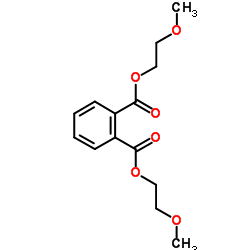Teratogenicity of dimethoxyethyl phthalate and its metabolites methoxyethanol and methoxyacetic acid in the rat.
E J Ritter, W J Scott, J L Randall, J M Ritter
文献索引:Teratology 32(1) , 25-31, (1985)
全文:HTML全文
摘要
It is hypothesized that the known teratogen di(2-methoxyethyl) phthalate (DMEP) acts by in vivo hydrolysis to 2-methoxyethanol (2-ME), also a known teratogen, which in turn is metabolized to methoxyacetic acid (MAA), the proximate teratogen. Teratological studies were conducted with Wistar rats, with the administration of these three agents on day 12 of gestation. On an equimolar dosage basis, DMEP, 2-ME, and MAA were equally potent, which is consistent with the hypothesis. There was a striking similarity in the defects produced by these agents, mainly hydronephrosis, heart defects, and short limbs and tails. In particular all three agents produced unusual heart defects (dilated ductus arteriosus and dilated aortic arch) not seen with other agents, as well as ventral polydactyly, a rarely seen defect, suggesting teratogenic action by a common mechanism or component; 4-methylpyrazole, an alcohol dehydrogenase inhibitor, provided significant protection against 2-ME. This combination of effects strongly suggests that following the administration of DMEP, 2-ME, or MAA, MAA is the proximate teratogen.
相关化合物
| 结构式 | 名称/CAS号 | 分子式 | 全部文献 |
|---|---|---|---|
 |
邻苯二甲酸二(2-甲氧基)酯
CAS:117-82-8 |
C14H18O6 |
|
Determination of Selected Phthalates by Gas Chromatography-M...
2015-01-01 [J. Toxicol. Environ. Health A 78 , 1008-18, (2015)] |
|
Evaluation of a testicular sperm head counting technique usi...
1983-05-01 [Arch. Toxicol. 53(1) , 71-8, (1983)] |
|
Effects of dimethoxyethyl phthalate, monomethoxyethyl phthal...
1984-04-01 [Toxicol. Lett. 21(1) , 97-102, (1984)] |
|
Di(2-ethylhexyl)phthalate induces hepatic tumorigenesis thro...
2007-05-01 [J. Occup. Health 49(3) , 172-82, (2007)] |
|
Dimethoxyethylphthalate metabolism: teratogenicity of the di...
1984-02-01 [J. Appl. Toxicol. 4(1) , 35-41, (1984)] |